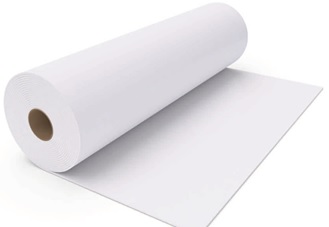
Price: on request
Superwool® XTRA paper is made of Superwool® XTRA bulk fibres and organic binders. Superwool® XTRA paper is specially processed to offer excellent performance in high-temperature applications. Superwool® XTRA paper provides stability and resistance to chemical attack and is unaffected by incidental spills of oil or water. Thermal and physical properties are restored after drying. It has excellent thermal insulation characteristics and exceptional handling properties. Very flexible and resistant to tearing, Superwool® XTRA paper is particularly suited to all applications requiring further processing (laminated composites, die-cutting, rolling, folding). The organic binder burns out cleanly on the first firing at approximately 300 0C (572 0F), with ignition starting at 180 0C(356 0F).
Type:
paper manufactured from high temperature insulation wool.
Classification temperature:
1400 0C (EN 1094-1) 2600 0F (ASTM C892-17).
The maximum continuous use temperature depends on the application.
Melting point:
Superwool® XTRA has a melting point of 1650 0C (3000 0F).
Benefits:
• exonerated from any carcinogenic classification under Nota Q of directive 97/69EC, certificate available on request;
• thin, flexible high temperature insulation;
• very low thermal conductivity;
• thermal stability;
• excellent thermal insulating performances and low heat storage;
• immune to thermal shock;
• does not form crystalline silica when exposed to high temperatures;
• excellent resistance to chemicals and pollutants, especially alkali metals;
• no reaction with alumina based bricks in application in the range of the typical use temperature;
• low shot content;
• excellent tensile strength;
• easily die-cut to form complex shapes for high temperature gasketing;
• good resistance to tearing;
• high flexibility;
• precise thickness;
• smooth on both sides.
Physical properties | Superwool® XTRA paper |
Classification temperature 0C (0°F) | 1400 (2600) |
Melting point 0C (0F) | 1650 (3000) |
Typical properties |
|
Colour | white |
Density, average kg/m3 (pcf) | 190-210 (12-13) |
Tensile strength (EN 1094-1), MPa | > 0,45 |
High temperature performance |
|
Loss of ignition % | 8 |
Permanent linear shrinkage (EN 1094-1) | < 3 |
Permanent linear shrinkage (ASTM C892-17) | < 3 |
Thermal conductivity W/m.K (ASTM C-201) |
|
200 0C (390 0F) | 0,05 (0,35) |
400 0C (750 0F) | 0,08 (0,56) |
600 0C (1110 0F) | 0,13 (0,90) |
800 0C (1470 0F) | 0,21 (1,46) |
1000 0C (1830 0F) | 0,30 (2,08) |
1200 0C (2190 0F) | 0,41 (2,84) |
Chemical composition, % |
|
Al2O3 | 32-38 |
SiO2 | 27-33 |
K2O | 23-28 |
ZrO2 | 5-9 |
MgO | 0,5-1,5 |
other oxides | <0,5 |
Thickness, мм | Length, м |
1 | 40 |
2 | 20 |
3 | 15 |
4 | 10 |
5 | 10 |
6 | 10 |
7 | 10 |
8 | 10 |
9 | 10 |
10 | 10 |

